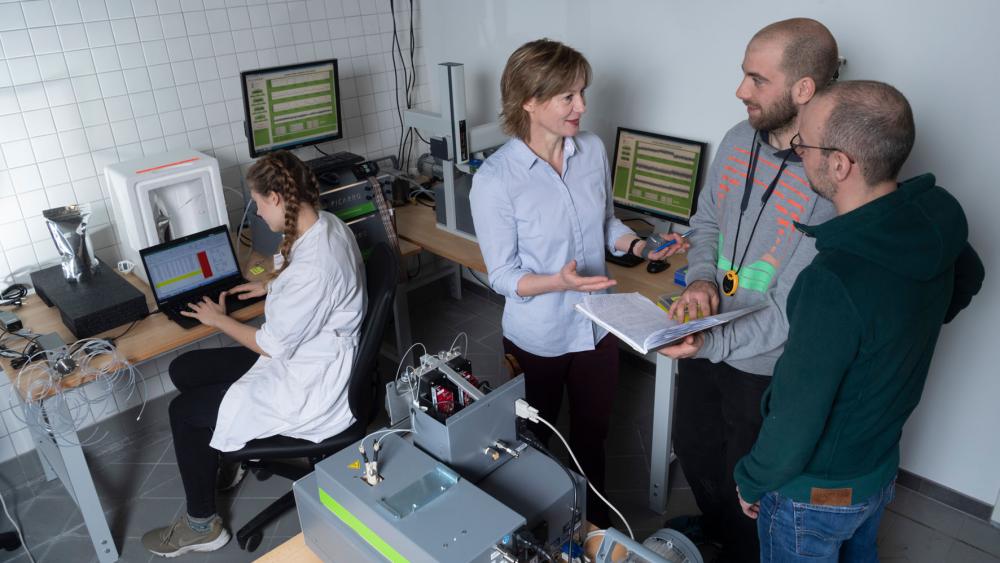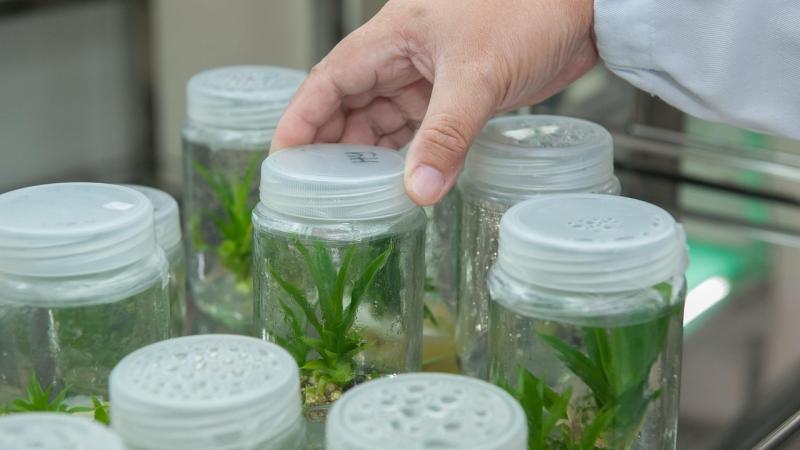
Dörthe Tetzlaff (second from left) and her team in the IGB isotope laboratory. I Photo: David Ausserhofer
The research field of ecohydrology is highly interdisciplinary and deals with the storage, distribution and quality of freshwater in the landscape and the effects of these processes on water resources. A distinction is often made between green water (the water in terrestrial systems that is influenced by plants) and blue water (from lakes, rivers and aquifers, which is directly available for water supply).
Dörthe Tetzlaff, head of the Ecohydrology department at IGB, and colleagues present the latest developments in environmental sensing, data management and synthesis and modelling in the journal Ecoyhdrology. “Currently we are really noticing how new synergies and methodological advances are bringing a boost of knowledge. We want to illustrate this dynamic in this review article,” says Professor Tetzlaff.
The IGB researcher explains the development using an example: “Researchers can explore unknown territory, in every sense of the word. The critical zone – the thin, dynamic and life-giving surface layer of the earth, between the plant roof, the soil and the groundwater – has long been a 'black box'; the role of plants in the distribution of water has been neglected. With stable isotopes and Tracers we can identify hydrological sources and elucidate how vegetation influences the division between 'green' and 'blue' water flows. With these methods we also find out at what rate water moves through the landscape and how old these hydrological fluxes are. When this information is integrated with data on vegetation dynamics, tracer-based modelling can reveal some of the most important processes in the ecohydrological system, such as where and at what rate plants draw water from the soil.”
In times of climate and environmental change, such new findings are of particular importance for arid regions like Brandenburg. That is why the research group Landscape ecohydrology is also researching directly on site.





